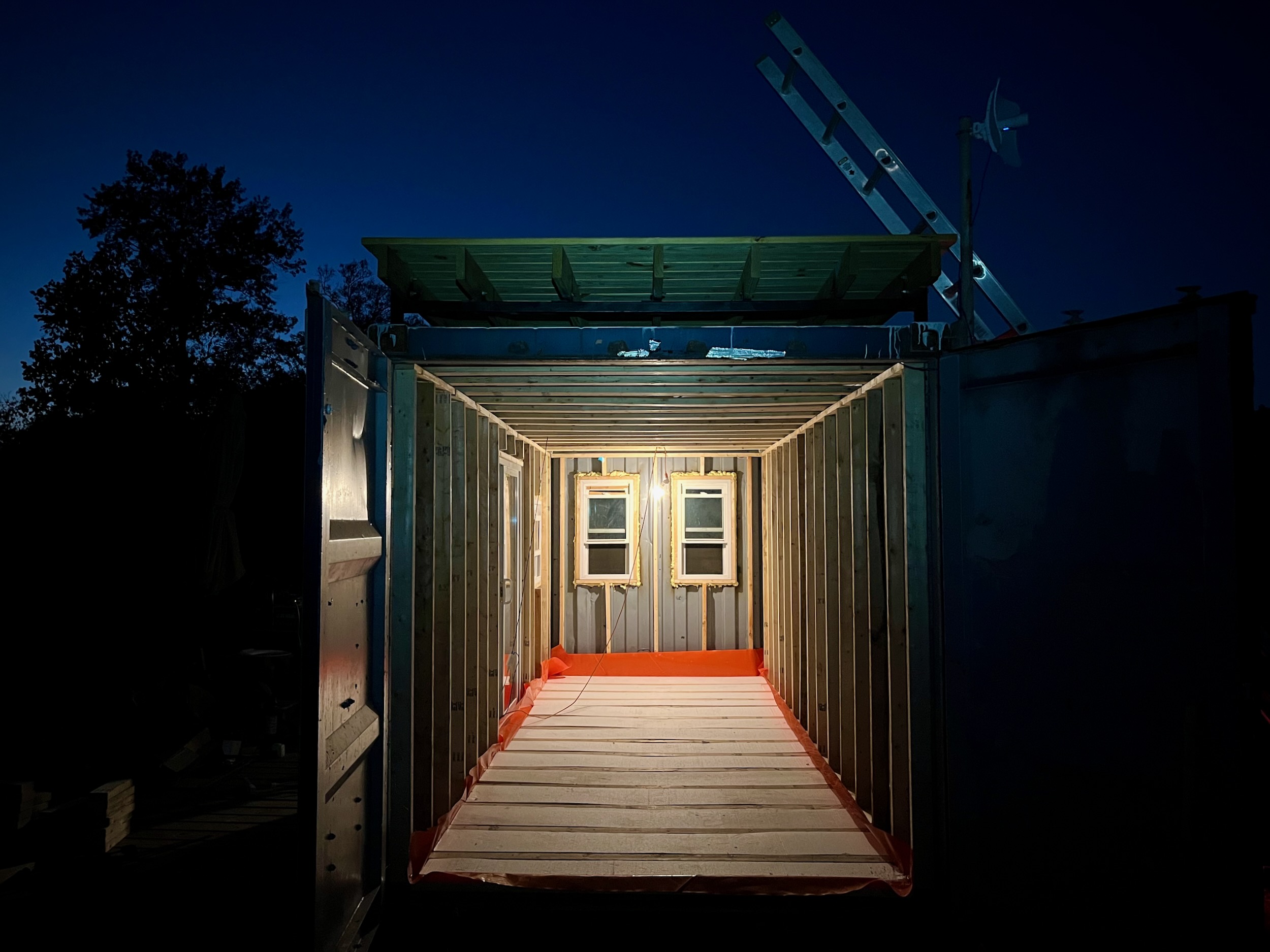how to hold the universe together with clamps
on scale, light, and the recurring urge to assemble stuff
At the smallest scale we can describe, space flickers with uncertainty. The Planck length, around 10-35 meters, is so small that even our best equations lose confidence. Below it, distance and time stop behaving as smooth quantities, and the two great frameworks of physics (quantum mechanics and general relativity) still refuse to meet. We do not yet have the theory that unites them, the bridge between the granular and the continuous. Yet from this unresolved foundation, order insists on appearing.
Around 10-20 meters, quarks and gluons form temporary alliances, binding into protons and neutrons. Then, after an absurd leap across ten orders of magnitude, electrons drift through quantum clouds to form atoms. It is a long way between neighbors, like skipping every rung of a ladder and still expecting the structure to hold. Somewhere in that gap, matter learned to cohere.
My work lives around 10-9 meters, where the fold of a protein becomes the foundation of biological function. I fuse DNA together using ligases, design globular CLAMPs and antibodies that recognize specific morphologies, and see their architectures through cryo electron microscopy. I have looked into the hinge between the light and heavy chains of an antibody I built and recognized the folds that make biology possible. Without them, there would be no catalysis, no recognition, no life at all. Seeing those folds feels less like observation and more like witnessing the foundation of biology itself.
At the scale of cells, about 10-6 meters, those molecules gather into self sustaining systems. Each cell is a soft frontier between disorder and coherence. Within my human body, 1.83 meters tall and 86 kilograms in mass, thirty trillion of them work in concert. I am both their caretaker and their creation, an emergent pattern born of their quiet collaboration.
My particular personality quirk is that I thrive on building things, putting pieces together in new ways, inventing and innovating (innoventing). I join molecules with enzymes and metals with heat, welding steel with the same precision I use to fold proteins. In both, atoms cross thresholds of energy and rearrange into stability. Oxides lift, electrons leap, and new lattices form, stronger than before. Welding is chemistry made visible, a kind of kinetic patience that rewards care over force.

At the human scale, about 100 meters, the meter is our natural unit, the measure of reach and stride. Consciousness is tuned to this middle ground, where microscopes and telescopes extend our senses in both directions, yet meaning still gathers here, where language and pattern form at the scale of the body. I am shaping w.oodland into a place of scales, a workshop and laboratory with a telescope for the stars, a microscope for the invisible, and a cabin for the observer in between. If all goes well, I can operate across roughly twenty four orders of magnitude here, from 10-9 to about 1015 meters, a range broad enough to observe, experiment, and build with tools I can make by hand.
Beyond what we can touch, the planet breathes. Grass bends, water mirrors light, air folds over the curve of Earth. The Sun, about 109 meters wide, releases photons that travel eight minutes through space before striking the silicon of my solar panels, freeing electrons that flow into lithium iron phosphate sheets for storage. Those same light quanta sustain the trees around me. A single photon is a packet of energy released at the quantum scale, yet the cascade it triggers builds everything at ours. The same kind of particle that oscillates in a vacuum becomes starch in a leaf, charge in a wire, heat in a room, and motion in a runner’s stride. The chain from light to life is direct and constant.
At night, the sky fills with the light of other stars. Their photons arrive across distances measured in trillions of kilometers, far too faint to warm us yet rich enough to inform us. The Sun provides energy and it is also a laboratory we study closely, and the rest of the stars extend that laboratory outward in space and time. Their light carries history, composition, and motion in small signatures. We collect those signals with mirrors and sensors, turning energy into understanding. Observation at our scale is translation, a disciplined way of interpreting the universe’s messages.
Time follows the same logarithmic order as matter. A human life lasts around 109 seconds. The Earth has orbited the Sun for roughly 1.4 × 1017 seconds, and the universe has existed for about 4 × 1017 seconds. If all of time were stacked like layers of sediment, our entire civilization would form the thinnest stratum near the surface, recent and delicate. Yet within that narrow layer, we build instruments that look backward to the first instants of expansion and inward to the molecular choreography of thought. We exist briefly, and we see deeply.
To build, to witness, to share what we learn before it fades, these feel like the best uses of a finite life. I feel lucky to see the scales I can see and to build things that connect them. My purpose is to push the curtain of the unknown outward, to stand on new floorspace of understanding. I build tools to explore what I cannot yet comprehend. Each discovery opens a little more of the map. To work across scales is to help the universe become aware of itself, molecule by molecule, idea by idea.